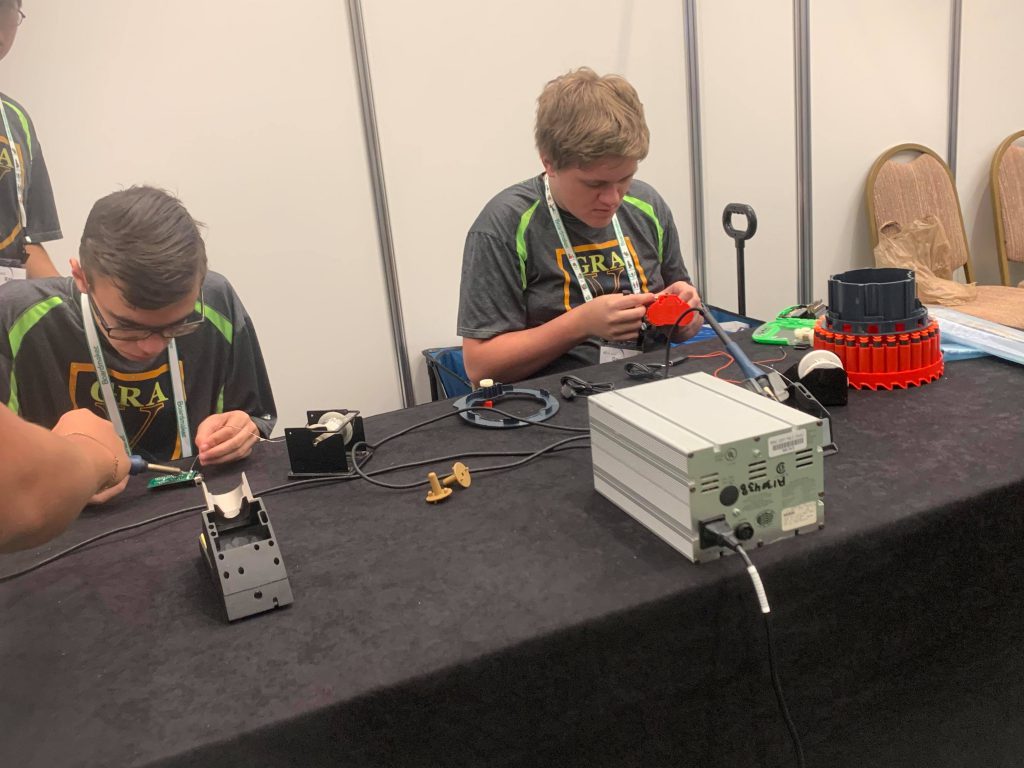A kid in a candy store. That’s the best way to describe the feeling I got walking into the vendor hall at the Assistive Technology Industry Association’s (ATIA) annual conference this January.
Stepping into this huge convention center filled with every possible piece of assistive tech hardware and/or software programs. Being surrounded by leaders in fields of AT and special education, such as Linda Burkhart, Gretchen Hanser, Caroline Musselwhite and Karen Erickson, to name just a few. Getting to choose from HUNDREDS of presentations.
In short, an assistive technology geek’s dream.
Over the two and a half days of the conference, I attended twelve educational sessions, an edcampAccess International event, a “Maker’s Day” event and so much time in the vendor hall that they had to kick me out on the last day after it closed.
The educational sessions cover almost any topic you can think of. Some of the sessions I attended were: Maximizing the day for students with complex needs (Leslie Haverstock M.A.), Multi-sensory and Artificial Intelligence to Support Communication for Autism (Lois Brady) and Attacking the Sexual Assault Epidemic with the Power of Communication (Elena Fader). There were so many awesome choices that for almost every breakout time slot I was torn between four to six top picks.
I was able to attend the annual edcampAccess International event. At this event, attendees wrote down AT related questions/problems they were having on large index cards and posted them on a huge board. If someone else also wanted to discuss that topic, they would take it off the board and place it in a time slot on a displayed wall schedule. Then, when the time came for that topic, if you’re interested you can join the conversations. My favorite was a question on how to better engage families.
The “Maker’s Day” event got me really excited. Assistive technology has a lot of downfalls, but probably the biggest ones are that it can be very expensive and when it breaks it takes forever to get it fixed. “Makers” are everyday people who, using commonly available and inexpensive materials, create custom pieces of assistive technology. Orthotics made on 3D printers, custom hand controls for wheelchair and switches made out of basically anything you can think of are just a few examples.
The part that I loved the most was that a lot of these “Makers” at the event were high school robotics teams. Students making solutions for their peers and/or people in their community, building connections while learning STEM skills and having fun. If you want to learn more, visit http://atmakers.org/
The ATIA conference was a jam packed whirlwind of information, connections and discovery.
If you are interested in attending an assistive technology conference, there are multiple assistive tech conference in the US, but the two major ones are (Assistive Technology Industry Association) ATIA and Closing the Gap. ATIA is typically held in late January to early February. Closing the Gap is in the fall, typically in October or November.
If you’re curious about how they are different, here’s a quick rundown:
— ATIA is the biggest and focuses heavily on the assistive technology companies. If you want to see everything that’s out there and what’s being developed, this is where you’ll find it. ATIA has way more sessions, but each session is on average shorter. Each potential speaker is limited to only two presentations. So if you want to see a particular speaker, you have less opportunities.
— Closing the Gap is smaller, but with a huge focus on educational sessions, the sessions are often longer and there are lots of chances to connect and hear from experts. There is still an assistive technology company presence, but it’s in the background. If you’re looking to see the newest things on the market and how to use them, you want ATIA. If you’re looking for information on how to incorporate assistive technology into life and school from experts in the field, you want Closing the Gap.

Connect with families, read inspiring stories, and get helpful resources delivered right to your inbox.